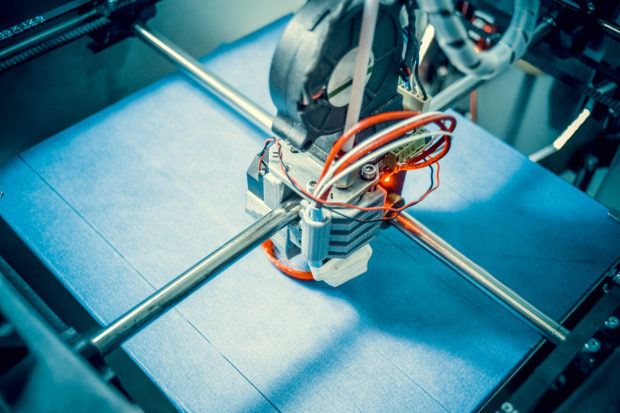


Insurers are woefully behind in developing a coverage strategy for 3-D printing and stand to face liability problems if they don’t do so, an expert appearing at the PLUS 2017 conference in Atlanta said recently.
“Unlike other areas of technology, like the Internet of Things, where the insurance industry is getting a grip on holes and where the liability is, no one is really tackling 3-D printing. [But] this is moving along faster than you think,” said Jura Zibas, an expert on intellectual property and cyber security, and a partner with Wilson Elser Moskowitz, Edelman and Dicker LLP.
Zibas spoke about the issue on Nov. 2 during her PLUS presentation. Her message was one of urgency, telling insurers that they need to act because 3-D printers are involved in many different kinds of liability and risks, and their use is growing exponentially.
“This is a very young industry that is growing fast,” Zibas said, predicting that 15 to 20 billion 3-D printers will be sold by 2020. China is fueling part of this, with government incentives in place to use 3D printers for manufacturing When those 3-D printer-related products are then shipped to the United States, Zibas said there will be “perplexing” issues in terms of quality control, targeting where insurance is needed and where to point the finger when liability issues arise.
Who Is Liable?
Zibas noted that 3-D printers have become ubiquitous in nearly every industry, from medical devices and tissue development to fertility treatments, pharmaceuticals, guns and in the entertainment industry. Even athletes create their signature sneakers using a 3-D printer first. In Netherlands, engineers used 3-D printers to create a cement-based bridge for bicycles. Manufacturers are even testing 3-D printers for different types of plastic and steel production, and they are eyeing metal production next. Airplane parts are now being made by 3-D printing, too.
Additionally, there are home 3-D kits now, that enable entrepreneurial manufacturing, Zibas pointed out, but all of these added printer uses carry plenty of uncertain risks.
Consider: 3-D printers use software so there are hacking risks. While the printers reduce manufacturing costs, there are liability issues if the printer produces defective parts, or final products. An open question: would the liability be with the manufacturer, or the maker of the 3-D printer?
“If there is a defect, is it because someone didn’t know how to set up the printer head or produce [the product], or is it bad [design] software?” Zibas asked. “It’s a complicated liability problem.”
Expectations are that 3-D printers will be used at home, but many rely on chemicals, Zibas said. If there is a problem with a home chemical spill, she wondered, will the home 3-D user need a liability policy to cover the printer?
“The owner of the printer, sitting at home, could be responsible, if it is do-it-yourself manufacturing,” Zibas explained. If the printer owner made children’s birthday party gifts with the printer, for example, and used discounted chemicals and less expansive plastic, and a young child ate one of the gifts, Zibas said the risk at this point would be an open question.
“Is your homeowners [insurance] going to cover that? Is [the liable party] the resin manufacturer, or the person who sold you that 3-D printer that should have known better, and didn’t know that you weren’t going to take 6 months to learn the printer and take precautions?” Zibas said.
No Regulations
Zibas noted that the 3-D printing industry has no regulations and at this point lacks consistent standards, which is another area ripe for liability challenges when lawsuits inevitably arise.
“There is nothing regulated,” Zibas said. “Everyone is assuming the engineers are realizing when someone is putting pieces together they are evaluating liability. They are excited they built a bridge, not [thinking that] they better call the legal department. It is not happening.”
By mentioning all the potential 3-D printing risks, Zibas said she wanted to communicate the extent of the challenges right now, and encourage her insurance industry audience to make preparations before the risks become even more prolific and hard to track.
“The purpose of what I wanted to relay is to help people understand how complex this technology is,” Zibas said. “At the same time, it brings opportunity and gives us a chance to get ahead of the game.”